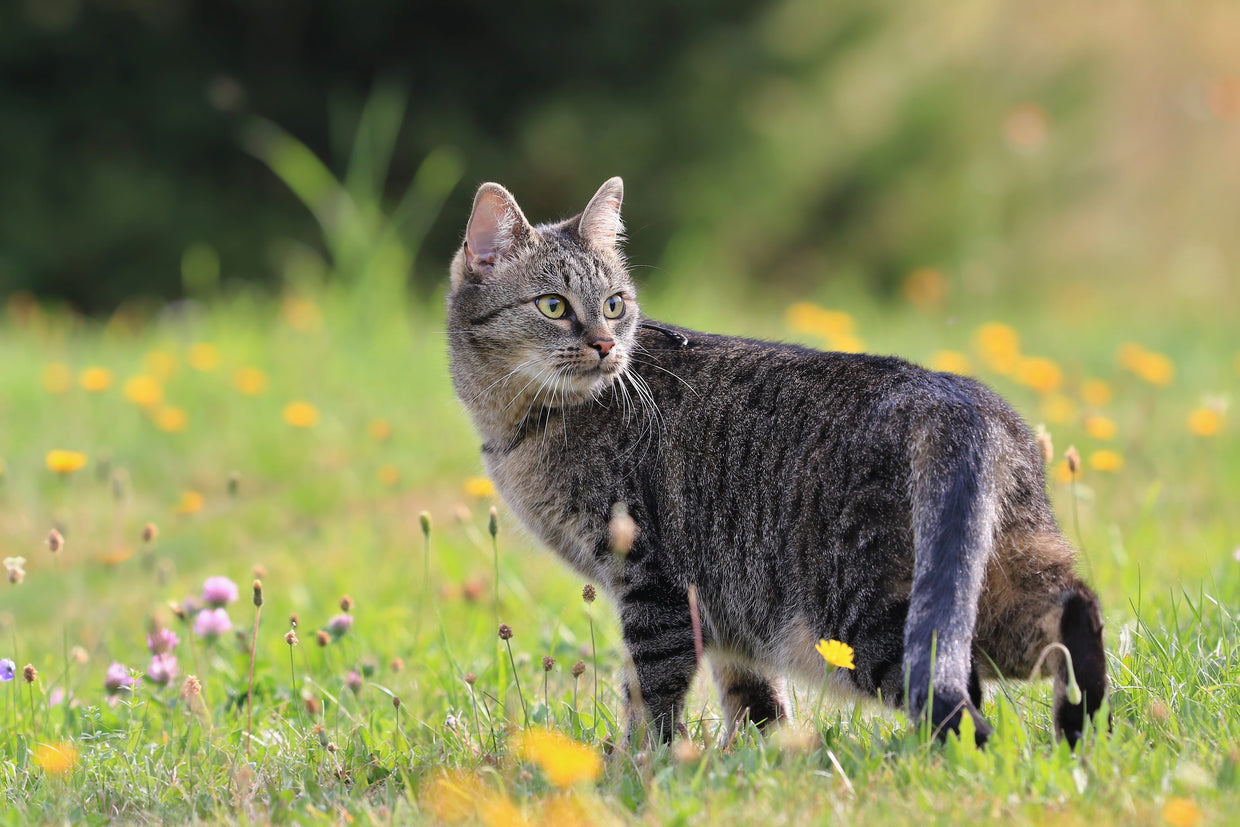

Common cat allergies and how to spot them
Hay fever and allergies of all sorts are common concerns among us humans. And, unfortunately, it turns out that our feline friends can also end up with a range of different allergic symptoms when they’re in contact with something they shouldn’t be.
If your cat seems to be a bit on the irritable side, cat allergens may be playing a role – and that means it’s time for you, as their human helper, to learn how to spot cat allergy symptoms and look into solutions.
What is your cat likely to be allergic to?
Much like with people, cats can be allergic to a number of different things, ranging from airborne particles found in the environment, to foods and parasites.
Here are some of the more common cat allergies to be aware of…
Environmental allergens
Environmental allergens can include pollen, grasses, mould, mildew, dust and various plants which your cat is likely to encounter in their surroundings – whether they’re an indoor cat, or an outdoor one.
Unfortunately, just like us, our cats can develop hay fever-like allergies – with symptoms flaring up during times of high pollen count, for example.
Symptoms of environmental allergies in your cat can include:
- Itchy skin in cats
- Heavy or fast breathing
- Sneezing, coughing, and wheezing
- Itchy and runny eyes
- Swollen paws
- Snoring
Being aware of which environmental factors trigger your cat’s allergies is important – as is taking basic precautions to limit their exposure to those triggers by doing things like keeping them indoors with the windows closed on days when pollen counts are high.

How are environmental allergies diagnosed?
Environmental allergies in cats are usually diagnosed in one of two ways – through intradermal skin testing, or allergy blood testing.
Intradermal skin testing is generally considered the most accurate and effective form of testing, but it usually requires your cat to be sedated and for large areas of your cat’s coat to be shaved so that the skin can be observed along with any allergic skin reactions.
Allergy blood testing only requires a blood sample, so can usually be done conscious.
Speak to your vet about getting your cat allergy tested and they’ll be able to guide and advise you on the best approach for your feline friend.
Food allergens
According to a study from Cornell University, food allergies are the third most common category of feline allergy, with only allergies to flea bites and inhaled substances being more common.
But what sorts of foods can be allergy triggers for a cat? Common culprits include:
- Beef
- Chicken
- Fish
- Dairy
It’s important to be aware that your cat can develop food allergies throughout their life, to foods that weren’t previously an issue. But a cat can’t develop a food allergy to a food they’ve never consumed.
The best thing to do if you suspect a food allergy is to closely monitor your cat and to watch out for any signs of irritation following feeding certain foods or ingredients. As always, you should consult with your vet immediately if you notice any of the tell-tale signs of a food allergy, including:
- Chronic itching and skin irritation
- Overgrooming (causing further skin irritation and hair loss)
- Recurring infections of the skin and ears
- Vomiting
- Diarrhoea
How are food allergies diagnosed?

When your vet is investigating whether your cat has a particular food allergy, they will generally put your cat on an elimination trial diet. This involves only feeding them foods that don’t contain any protein sources they’ve previously been exposed to.
If your cat’s symptoms clear up during the period of the elimination diet, it’s a sign that something they were previously eating could have been causing them to have an allergic reaction.
The next step after the elimination diet is a ‘food challenge,’ where your vet might recommend reintroducing your cat’s old food in a controlled way, while carefully monitoring them to see whether allergic symptoms return.
This process of testing is important to rule out other potential causes of the symptoms, and to pinpoint the food allergy accurately.
Fleas
Flea allergies are very common allergies found in cats. They happen as a result of an allergic reaction to proteins found in fleas’ saliva and mean that your cat will have a much stronger response to flea bites than non-allergic cats.
A normal reaction to a flea bite on a cat’s skin will be a minor irritation. For cats who are allergic, however, reactions to being bitten can include intense itching and scratching – to the point of hair loss, sores, and secondary bacterial infections.
If you suspect your cat of having a flea allergic reaction, we recommend seeing your vet as soon as possible. They’ll be able to properly inspect your cat, provide a flea-removal treatment, and give you advice on how best to support your cat until they feel better. This might include medication and/or a buster collar.
What to do if your cat has allergies
If you suspect that your cat has allergies, the first thing to do is to consult with your vet. They’ll advise you on the next steps to take and can arrange for your cat to be allergy tested. They may also prescribe forms of cat allergy treatment such as medicated shampoos, steroids, or immunomodulating medicines – as well as providing advice on limiting exposure to allergens.
Read more about the most common skin problems in cats.


